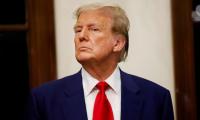There’s a growing sense of deja vu for observers of Pakistan’s power corridors as the PML-N-led ruling structure races to gain unchecked power.
In the 1990s under Nawaz Sharif’s second tenure as prime minister, the rulers first toppled well-respected president Farooq Leghari, then rode out to capture the Supreme Court led by then-chief justice Sajjad Ali Shah and finally forced out the respected army chief General Jehangir Karamat. Together, those pursuits came with just one objective: to accumulate massive power for the prime minister – albeit with dangerous consequences.
Tragically for Pakistan, those moves together did not block the events of 1999 that forced out the entire democratic structure for almost a decade. Today, that eventuality though seemingly unlikely is nevertheless replaced by other monumental challenges – the politics, economy and society of Pakistan rapidly drifting apart.
Following the controversial 26th Amendment – in effect a move to tighten the grip around the top judiciary – the ground is now being laid for further tinkering with the constitution.
On Monday, the government successfully presided over new constitutional amendments that raised the number of judges in the Supreme Court and extended the terms in office of the chiefs of staff of Pakistan’s armed forces.
For many in the ruling structure, the latest move is set to arm the government with greater clout. And yet Pakistan’s real-life challenges which must eventually seal the nation’s fate, remain out of control for now. For the Shehbaz Sharif government, two equally profound challenges have increasingly become out of control during its tenure, which began after parliamentary elections in February this year.
On the one hand, the government’s legitimacy has faced mounting questions following one of Pakistan’s most controversial elections in the nation’s history. In stark contrast to the government’s mandate, a popular surge in favour of former prime minister Imran Khan gathered momentum, amidst widespread allegations of manipulation of results after polling ended on February’s election day. Never before has the Election Commission of Pakistan (ECP) become equally controversial.
On the other hand, the government has failed over time to kickstart the economy which remains Pakistan’s biggest challenge. On Monday, the State Bank of Pakistan reduced its interest rates by 2.5 per cent, citing a recent fall in inflation. For Pakistan’s top decision-makers, falling interest rates are set to spur fresh investments in the coming months and years, marking a trend that will lift the country’s prospects in future.
This follows a success in stitching together a new loan from the IMF that promises to hold back the fear of a sovereign default and keep Pakistan afloat for the next three years.
But Pakistan faces a difficult environment where falling interest rates alone will not mark an upsurge in investment activity. For the moment, big gaps ranging from a volatile political atmosphere to a tense security environment in parts of Pakistan will only work as disincentives for prospective investors. Besides, exorbitant input costs notably the cost of electricity and gas have already become disincentives for investors.
Among the chief impediments to a sustainable economic recovery, the list is topped by the matter of raising revenue collection to meet Pakistan’s ever-growing needs. Notwithstanding Prime Minister Sharif’s government’s claim of having enrolled many more taxpayers into the national tax net, there’s still a major hole waiting to be filled. In a country with a chronic challenge of widespread tax evasion, Pakistan remains an unattractive destination for those who seek to enter a largely documented economy.
Ironically, in sharp contrast to claims from the country’s top rulers, Pakistan is yet to witness a robust commitment to meaningful reforms that will eventually become a vital plank for progress in years to come. The country’s ruling class is yet to be exposed to a new way of governance that treats everyone alike, irrespective of their status.
On the economic front, gaps such as a high incidence of poverty have fuelled other challenges, notably a failure to produce significantly literate communities in larger numbers, and far more progress in overcoming key gaps such as reining in a high rate of population growth. With gaps on the societal front, it is not surprising that Pakistan remains among the very few countries that continue to fail in battling a recurring incidence of polio.
Such gaps together highlight a clear writing on the wall. Though the ruling class seeks to empower itself with more authority principally with the objective of oppressing all of its opponents, Pakistan’s prospects head consistently downwards. Going forward, this ever-growing gap will simply expose the country’s mainstream population to far greater challenges with unpredictable consequences.
Unless Pakistan is forced through unprecedented reforms that reshape the country’s politics and economy alongside lifting its societal profile, the future is set to become far more bleak than the present or the past. More power alone for the ruling class tragically alone will not lift Pakistan’s destiny.
The writer is an Islamabad-based
journalist who writes on political and economic affairs. He can be reached at: farhanbokhari@gmail.com
This demand has fueled rapid growth deposit base of Islamic Banks and Islamic Windows operated by conventional banks
But Punjab Agriculture Food and Drug Authority building near Thokar Niazbeg on Multan Road stands out
Macron has been particularly vocal in their criticism, asserting that withholding arms from Kyiv plays directly into...
As PPP governs province, Bilawal Bhutto Zardari holds strategic position to address both violence and its underlying...
Critics argue that strategy is vague, but closer look indicates strategic alignment with global trends and national...
To defeat it, we must distrust bot-driven narratives, to defeat it, we must verify sources before believing or sharing







